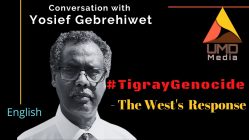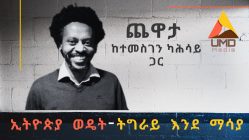Batseba Seifu
August 30, 2024
The political landscape in Tigray is marked by a deeply rooted power struggle, unveiling both significant challenges and potential opportunities for reform. Understanding the core reasons behind this dispute is crucial to determining whether it stems from a genuine drive for reform or if it is largely a contest for power. With little ideological distinction between the factions, the conflict appears to be primarily about control and dominance.
Challenges for Both Factions
The Tigray Interim Regional Administration (TIRA) has struggled to establish a strong local power base, a feat that Dr. Debretsion Gebremichael’s faction has managed to achieve. This raises critical concerns about the future effectiveness of TIRA in addressing Tigray’s urgent issues. The centralized authority held by those from the 14th congress has considerably weakened TIRA’s leadership. This decline in effectiveness highlights the broader challenge of dismantling entrenched power structures. To play a meaningful role in Tigray’s governance, particularly after the Pretoria Agreement, TIRA must rebuild support and restore credibility. However, the entrenched networks controlled by those from the 14th congress extend to lower levels of governance, complicating efforts to achieve meaningful change without facing significant resistance.
As TIRA grapples with contested control over both the Tigray People’s Liberation Front (TPLF) and its own administrative functions, it increasingly seeks legitimacy from the African Union (AU) and other external forces. By appealing to these bodies, TIRA hopes to strengthen its credibility and gain recognition amid the ongoing power struggle. This strategy reflects a tactical move to bolster its standing and legitimacy, with external validation potentially offering support against the internal and regional challenges it faces. The TIRA’s reliance on the AU and other external actors underscores its struggle to assert control and legitimacy within a complex political environment that extends beyond Tigray’s borders.
Strategic Opportunities for Reform
Before the 14th congress, TIRA introduced a strategy during an all-inclusive meeting that could potentially reshape Tigray’s political landscape. This strategy, which calls for the establishment of a multiparty system and the dismantling of the TPLF’s centralized control over various sectors, presents a significant opportunity for political transformation in the region. While it is unclear whether this strategy was deliberately devised by TIRA or if it serves as a means to gain support, it nonetheless offers a pivotal moment for change.
Path Forward
A comprehensive approach to reform in Tigray will require strong pressure from a diverse range of stakeholders. Internal pressure can be significantly bolstered through the formation of a coalition of nationalist parties, which can serve as a unified force advocating for a multiparty system and the dismantling of entrenched control. The collective effort of this coalition will be essential in driving the reform process and ensuring a successful transition towards a more democratic governance system.
Media outlets have a critical role to play in this process by promoting the benefits of TIRA’s proposed strategy and advocating for its adoption. Influential elites, including business leaders, intellectuals, and community figures, must actively leverage their influence to push for democratic reforms. Additionally, social groups and civil society organizations must mobilize grassroots movements and public demand for change, contributing to the creation of a more inclusive and equitable political environment.
While the path to reform in Tigray is filled with challenges, TIRA’s proposed strategy represents a significant opportunity for transformative change. A unified and collaborative effort from all stakeholders, focusing on pressure and cooperation, is essential for addressing the region’s deep-seated issues and moving towards a more democratic future.
Editor’s Note: The opinions expressed in the articles published on UMD Media are solely those of the individual authors and do not necessarily reflect the views or opinions of the editorial team or UMD Media as an organization. The publication of any opinion piece does not imply endorsement or agreement by UMD Media. Readers are encouraged to critically evaluate the content and form their own conclusions. Leave your comments below. Send us your thoughts and reflections to umd.media.2020 at gmail dot com.
Guidelines for contributors All contributions and comments submitted to UMD Media must adhere to the following guidelines. Respectful Language: Avoid using ethnic adjectives that generalize or portray an entire ethnic group in a negative light. Such language is harmful, divisive, and contrary to our commitment to fostering a respectful and inclusive environment. No Incitement: Content that incites hatred, violence, or discrimination against any individual or group based on ethnicity, race, religion, etc will not be tolerated. Constructive Dialogue: We encourage constructive dialogue and the sharing of diverse perspectives. However, it is essential to express opinions in a manner that respects the dignity and humanity of all individuals and groups. Moderation and Enforcement: Our editorial team reserves the right to moderate and, if necessary, remove any content that violates these guidelines. Repeat offenders may be subject to account suspension or banning. By contributing to our platform, you agree to abide by these guidelines and help us maintain a respectful and inclusive community.
Subscribe to UMD Media channel. Join UMD Media Telegram Channel: https://t.me/UMDMedia




